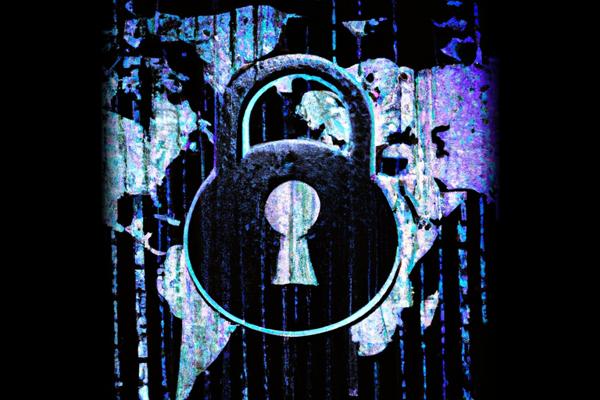Introduction
The cybersecurity landscape is rapidly evolving, driven by increasing cybercriminal activities [4], geopolitical tensions [1] [3] [4], and advancements in technology [1], particularly artificial intelligence (AI) [3]. Organizations face heightened threats from state-sponsored actors and cybercriminals exploiting vulnerabilities, necessitating robust security measures and proactive strategies to mitigate risks.
Description
An increasing volume of cybercriminal actors is being observed [3], particularly with malicious nation-state activities linked to growing geopolitical tensions [3]. This includes significant threats from state actors, such as those stemming from the US-China trade war and the recent expansion of North Korea’s fake IT worker program, where malicious actors pose as legitimate IT professionals to infiltrate organizations [1], steal sensitive data [1] [3], and generate revenue for the regime [1] [3]. This tactic has recently extended its focus from the US to Europe [1], highlighting the need for organizations to enhance their hiring practices and implement robust identity and access management to combat insider threats [3].
The evolving threat landscape has significant cybersecurity implications, including the emergence of state-backed actors like Salt Typhoon and Volt Typhoon, who have engaged in cyberattacks targeting US critical infrastructure [4]. These intrusions not only pose risks for immediate intelligence gathering but also raise concerns about potential future destructive attacks. The convergence of threat actors—including lone hackers, organized cybercriminal groups [5], ideological hacktivists [5], and state-sponsored operatives—blurs the lines between their traditional roles. Threat actors are increasingly exploiting visibility gaps within organizations [1], targeting devices that lack adequate security tools [1], such as firewalls and VPNs. Notably, Chinese state actors have been observed using zero-day vulnerabilities in network and edge devices [1], emphasizing the need for security leaders to address these risks across their technology stacks [1].
In the realm of cybersecurity [3], new regulations are emerging alongside rapid technological advancements [3], particularly in artificial intelligence (AI) [3]. The rise of Generative AI technologies [5], especially Large Language Models (LLMs), is transforming cyber operations [2] [5]. Cybercriminals are utilizing these tools to enhance their capabilities [5], automate attacks [4] [5], and execute sophisticated phishing campaigns [5]. The integration of Generative AI and agentic AI is expanding the attack surface [2], enabling faster and more precise attacks [2], including AI-generated malware [2]. Nation-state actors from Russia [5], North Korea [1] [3] [5], Iran [5], and China are notably experimenting with LLMs to bolster their cyber activities [5], marking a significant shift in the threat environment [5]. As organizations adopt these technologies to improve productivity [2], they inadvertently create vulnerabilities that can be exploited by attackers [2]. Additionally, the use of unauthorized shadow AI tools by employees poses further risks to data security and overall risk management [2]. Organizations are urged to establish robust governance strategies and a unified access layer for data management to mitigate these risks [1].
As geopolitical tensions escalate [4], the responsibility for cybersecurity is increasingly shifting to the private sector [4], which is now facing heightened threats from state-aligned actors targeting critical industries like energy [4], finance [4], healthcare [4], and manufacturing [4]. Organizations are urged to enhance their operational readiness and threat detection capabilities [4], as the stakes are higher than ever [4]. The evolving threat landscape requires Chief Information Security Officers (CISOs) to assess the risks associated with AI-driven attacks and implement AI-enhanced defense mechanisms [2]. The changing economic landscape [4], driven by tariffs [4], is also affecting the cybersecurity supply chain [4], leading to potential delays and increased costs for critical infrastructure upgrades [4]. Proactive security measures are essential [4], as reactive approaches are deemed inadequate in the current climate [4]. Regular assessments of cybersecurity posture and exposure to attacks are necessary to mitigate risks from both nation-state actors and cybercriminals [4]. Automation is essential for prioritizing critical threats and ensuring real-time responses [2], while investing in skilled personnel and robust processes is crucial for maintaining security and building trust in an environment where threats are constantly emerging [2].
Cybersecurity professionals are increasingly utilizing AI solutions to streamline their operations [3], such as alert triage agents that help prioritize threats [3]. This allows security teams to focus on more sophisticated threats rather than being overwhelmed by routine tasks [1] [3]. However, the shift of data to the cloud has led to a rise in credential attacks [3], with compromised credentials being a primary method for breaches [3]. Infostealers are a significant concern [1], as they harvest credentials for sale on underground markets [1]. Continuous monitoring of threat actors is essential [5], as they often operate across various platforms and exhibit mixed motivations for their attacks [5]. Organizations must adopt intelligence-driven cybersecurity strategies [5], including basic authentication practices such as multifactor authentication [1], and maintain awareness of their entire cloud footprint to enhance security and effectively anticipate and mitigate risks.
Conclusion
The rapidly evolving cybersecurity landscape demands a proactive approach to address the challenges posed by cybercriminal actors, regulatory changes [3], and the integration of AI technologies [3]. Organizations must understand adversaries’ tactics and motivations to strengthen defenses against increasingly sophisticated cyber threats [5]. Integrating geopolitical risk into threat models and maintaining visibility over supply chains will be vital for navigating this complex environment. Proactive security measures [4], continuous monitoring [5], and investment in skilled personnel are essential to mitigate risks and build trust in an ever-changing threat landscape.
References
[1] https://ciso2ciso.com/google-cloud-top-5-priorities-for-cybersecurity-leaders-today-source-www-infosecurity-magazine-com/
[2] https://securityboulevard.com/2025/04/ai-is-reshaping-cyber-threats-heres-what-cisos-must-do-now/
[3] https://www.infosecurity-magazine.com/news/top-5-priorities-for-cybersecurity/
[4] https://www.tenable.com/blog/geopolitics-just-cranked-up-your-threat-model-again-heres-what-cyber-pros-need-to-know
[5] https://www.cognyte.com/blog/threat-actor/





